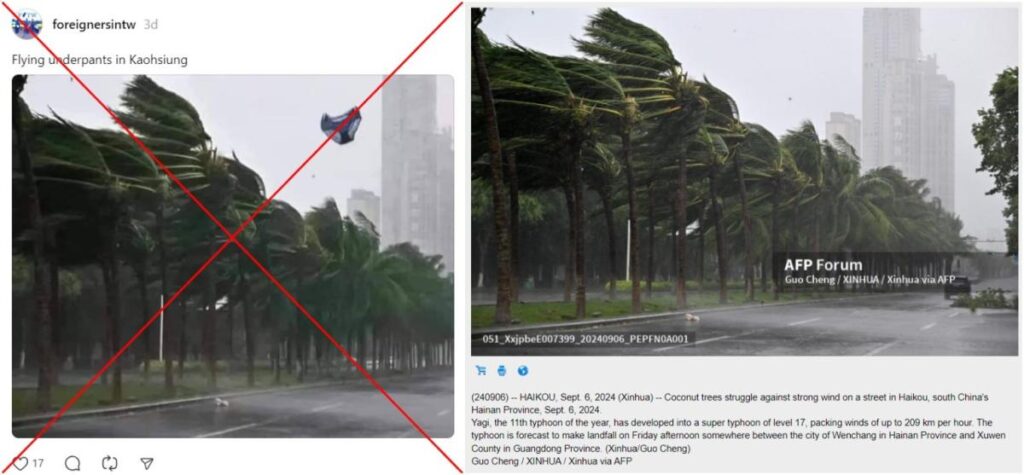In October 2024, a photograph of Typhoon Yagi, which hit southern China in September, was misappropriated on social media platforms during Typhoon Krathon’s impact on Taiwan. The altered photograph was disseminated with a misleading claim that it depicted underwear flying in the wind, purportedly during the storm affecting Kaohsiung. This incident took place amidst Typhoon Krathon causing catastrophic conditions in Taiwan, including mudslides, flooding, and fatalities, highlighting the dangers that arise during cyclone events compounded by the increasing intensity of storms due to climate change.
As Typhoon Krathon made landfall on October 3, 2024, Taiwan experienced severe weather patterns typical of its peak storm season from July to October. Local reports confirmed significant damages, with tragic human tolls, as mudslides and heavy rains led to evacuations and at least four lives lost. In the backdrop of these events, social media users quickly spread the misleading imagery, showcasing the repercussions of misinformation during crises. Despite the fraudulent claims resonating on platforms like Threads and Facebook, the reality was rooted in an entirely different weather disaster that had already occurred the previous month.
A thorough investigation into the misleading image revealed its true origin and the manipulative subtleties employed in its repurposing. The photograph in question originated from a report by Xinhua, a state-run news agency in China, depicting the aftermath of Typhoon Yagi in Haikou, Hainan Province, taken on September 6, 2024. Notably, the original picture captured trees swaying in the wind but lacked the added element of flying underwear. This discrepancy highlights an alarming trend where real-time events are distorted for comedic or sensational narratives at the expense of factual accuracy.
Further scrutiny of the photo’s authenticity illustrated the availability of original images in official archives such as those from AFP. The analysis confirmed the photograph’s legitimacy without any airborne garments, providing a stark contrast to the viral post flooding social media. Such misrepresentation can create public confusion and detract from the serious nature of weather phenomena, ultimately undermining both understanding and emergency preparedness among the general populace.
Additionally, details corroborating the context of Typhoon Yagi’s impact were confirmed through various authoritative sources, highlighting that this storm had resulted in devastating winds exceeding 230 kilometers per hour. Reports underscored the scale of evacuations necessary as nearly half a million people were urged to leave their homes in anticipation of the approaching tempest, which led to considerable destruction in Hainan and neighboring Guangdong provinces.
In summary, the incident encapsulates the intersection of natural disasters and the rapid spread of misinformation, raising concerns about the role of social media during critical events. As climate-related phenomena grow more potent due to environmental changes, the need for accurate information dissemination becomes paramount. In light of experiences like Typhoon Krathon and the fraudulent depiction of Typhoon Yagi, promoting media literacy and verifiable news consumption will be essential in safeguarding public awareness and response during future disasters.

